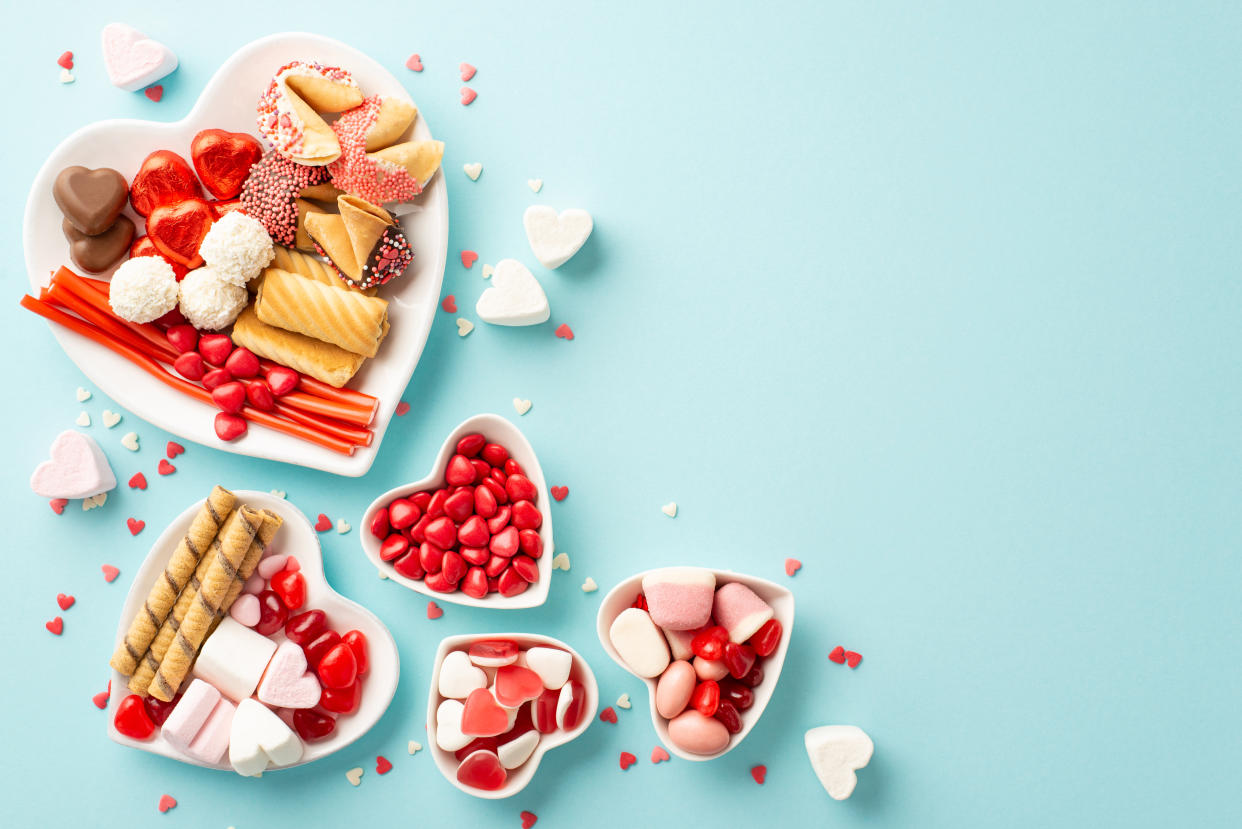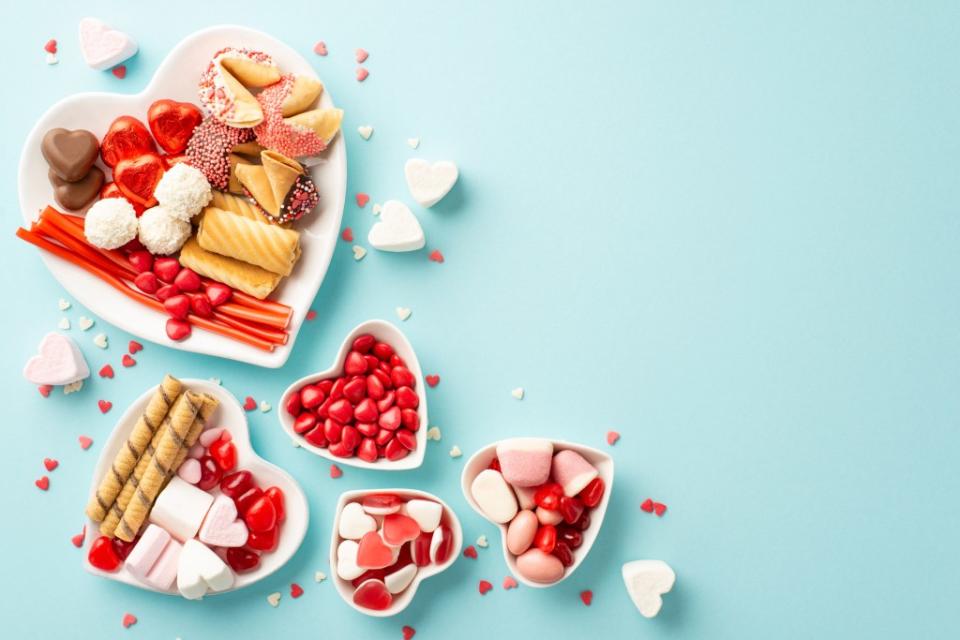Can Valentine’s Day candy be healthy? Here are the most nutritious options

It’s Valentine’s Day, which means you’re most likely surrounded by people wearing pink and red, heart-shaped items and, of course, lots of candy and chocolate.
But the influx of sweet treats on this day of love can feel daunting for the health-conscious or for those still going strong with their health-related New Year’s resolutions.
While candy might not have any nutritional value, that doesn’t mean it has to be erased from healthy eating habits.
What is the healthiest candy option?
Rose Britt, a registered dietitian with Top Nutrition Coaching, previously shared with USA Today that the healthiest candy options tend to be complex candies, such as Peanut M&M’s.
Because there are multiple ingredients, such as protein-packed peanuts, there’s more nutritional value than candy with just corn syrup.
One serving of Peanut M&M’s, which is about 12 pieces, contains 3 grams of protein, 1 gram of fiber and 14 grams of sugar.

If you wish to avoid foods with nuts, Britt recommends Smarties as a healthier option. One roll of Smarties contains just 6 grams of sugar and 25 calories.
“It’s not a whole balance, but it will give us a little more sense of fullness compared to our more traditional, straight-sugar type candies,” Britt said.
What is the healthiest type of chocolate?

It has long been thought that dark chocolate is the healthiest option when it comes to candy, and experts agree.
Lisa Young, a registered dietitian at New York University and author of “Finally Full, Finally Slim,” previously told The Post that dark chocolate that is 70% cocoa or higher is rich in anti-oxidants, which help to prevent or slow damage to cells in the body.
Dark chocolate also has less sugar and fat than the milk chocolate version. However, recent reports have found high levels of lead and toxic metals in dark chocolate, so milk chocolate could be a safer bet in that regard.
A 2022 investigation by Consumer Reports found that dark chocolate bars may contain two heavy metals that are linked to a wide range of health problems.
The organization tested 28 dark chocolate bars from the following brands: Hershey’s, Ghirardelli, Lindt, Dove, Godiva, Trader Joe’s, Hu, Mast, Taza Chocolate, Valrhona, Beyond Good, Equal Exchange, Scharffen Berger, Alter Eco, Pascha, Tony’s Chocolonely, Lily’s, Chocolove, Endangered Species Chocolate, Theo and Green & Black’s.
Researchers found that all 28 chocolate bars contained cadmium, a natural element found in soil that ends up in cocoa beans, and lead, which contaminates the beans naturally through the environment.
The heavy metals have been linked to a variety of health complications such as lung issues, memory problems, cancer and even early death.
Should candy be avoided on Valentine’s Day for a healthy diet?

The short answer is no.
Britt explained to USA Today that labeling foods as “junk” or “bad” should be avoided — especially around children whose relationship with food can be easily influenced.
“We can set ourselves up for that binging behavior if we internalize the shame of ‘I ate this bad candy so now I’m a bad person,’ ” Britt said.
Putting food into a “bad” category can lead to behaviors such as binge eating or eating in secret.

Licensed dietitian nutritionist Abra Pappa told the outlet that it’s all about balance.
Pappa reminds her patients that cookies and candy are not meals and to make sure to eat a nutritious meal before indulging in the sweet stuff.
“If you’re eating well-balanced meals, then we naturally have an easier time balancing out the sweets,” Pappa said.

